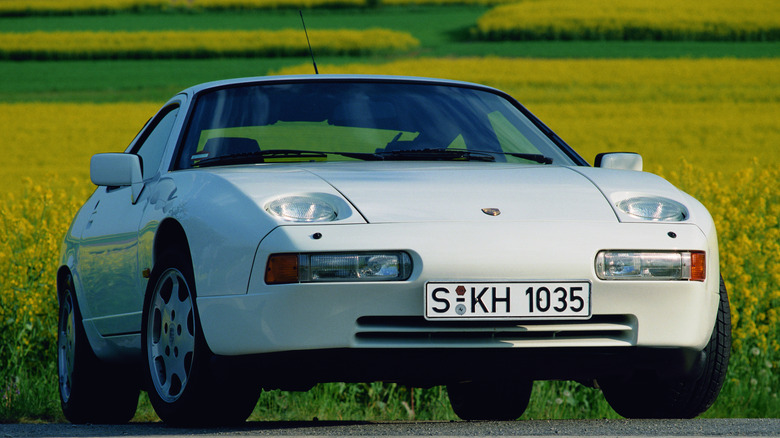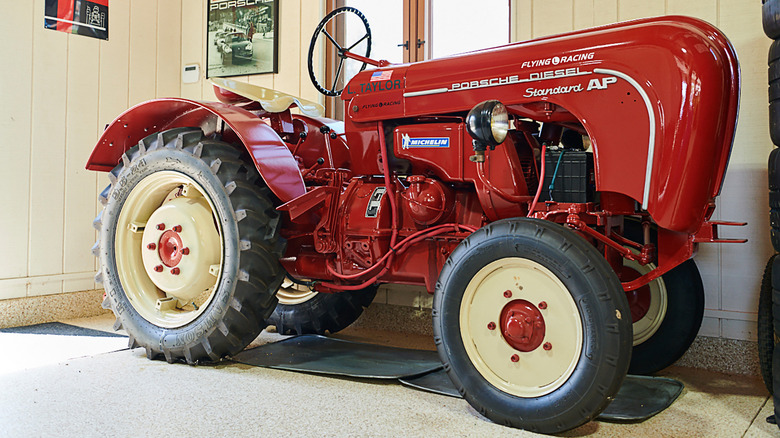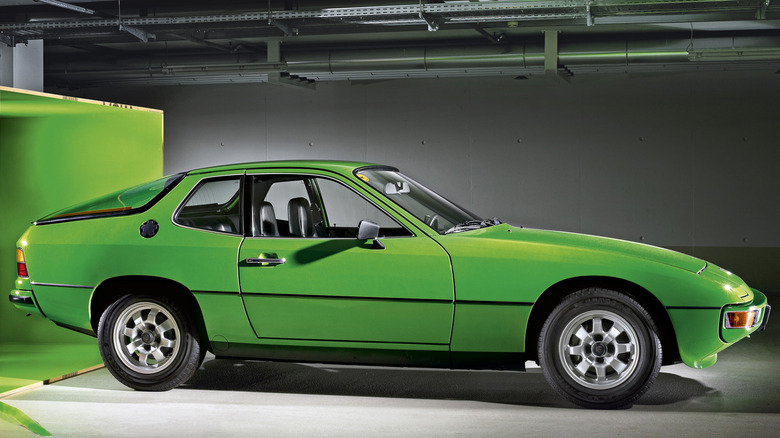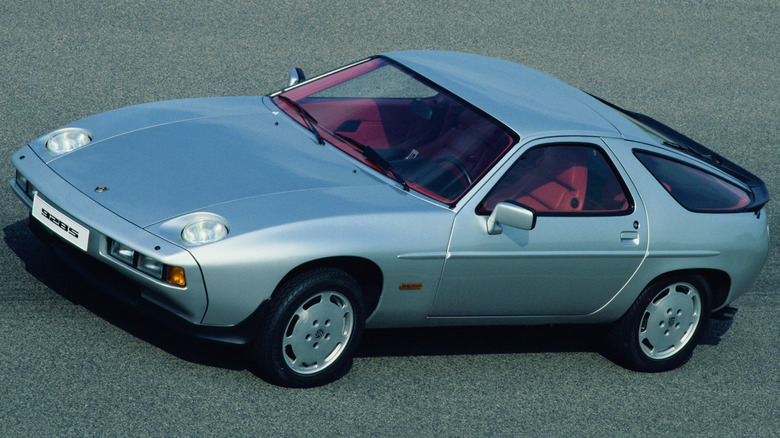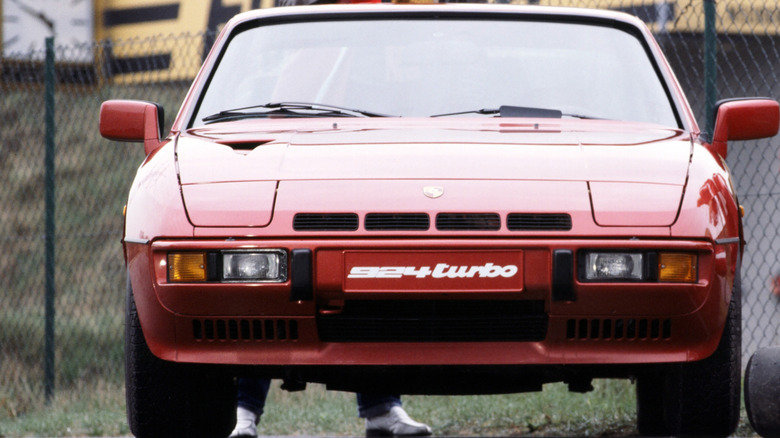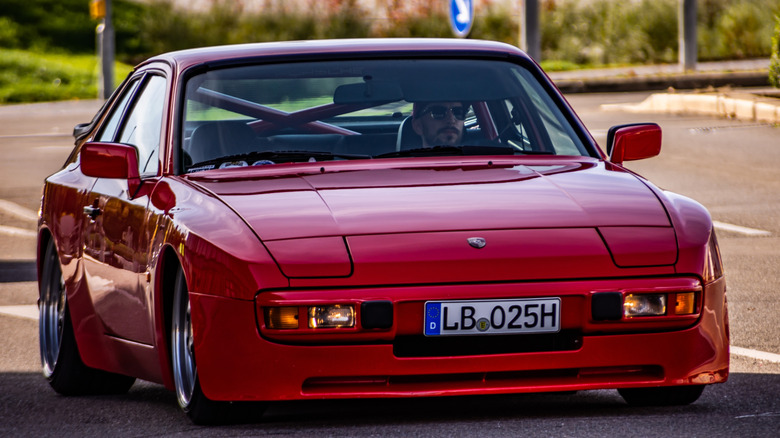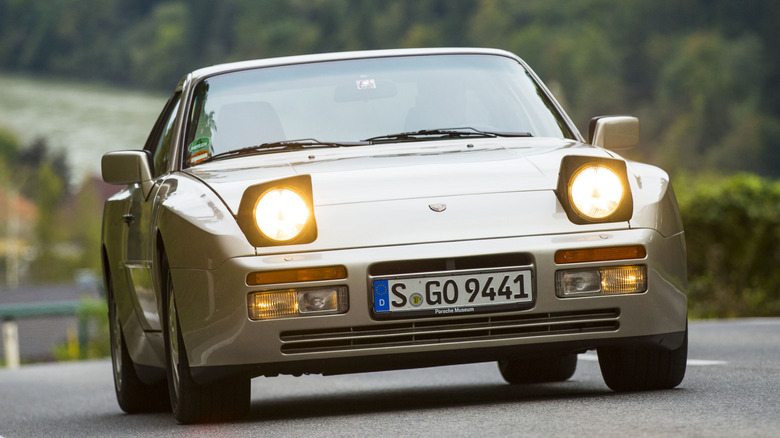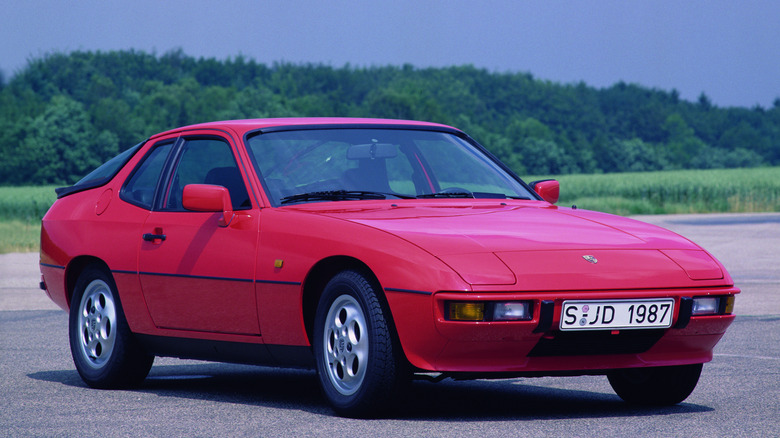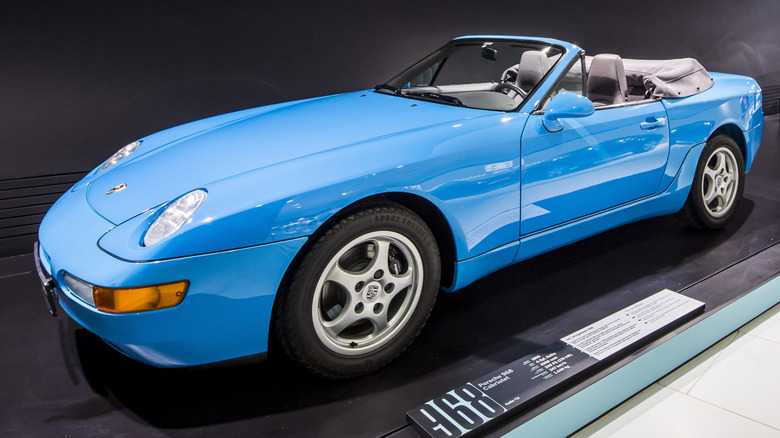Every Porsche Sports Car Model With A Front-Mounted Engine
While the early history of Porsche was dominated by cars with engines mounted either behind the rear axle or behind the driver, the company has produced quite a few vehicles with engines mounted in the front, ahead of the driver.
The switch to front-mounted engines in Porsche vehicles came about largely as a result of internal bickering between members of the two powerful families that owned and ran Porsche. These families were the Porsches and the Piëchs. Ferry Porsche, son of company founder Ferdinand Porsche, resolved this problem in 1972 by ruling that both families would cease to run the company on a daily basis. Instead, there would be new, non-family management in charge. What the new Porsche management did would not be up for debate, by Ferry Porsche or any other family member.
Thus freed of any ties to old ways of doing things, Porsche management blazed a new trail, which included a number of sports cars with front-mounted engines. But first, a look at the original Porsche model that came with a front-mounted engine ...
The 1956-63 Porsche Diesel tractor
The idea of the "Volksschlepper" (people's tractor) for German agricultural use was born in the 1930s, around the same time that Adolf Hitler and Ferdinand Porsche hatched the concept of the "People's car" that later became the Volkswagen Beetle. Both were conceived as mass-produced vehicles that would be made on an assembly line. While not a sports car, the Porsche tractor can be considered the first Porsche model with a front-mounted engine.
The Porsche tractor enterprise began as a joint venture, backed by a revenue-producing design license. The Porsche-designed tractors would be made by the company Georg Allgaier Presswerke. The Allgaier AP 17 tractor was revealed in Frankfurt on June 9, 1950 at the German Agricultural Exhibition. It was priced at the equivalent of $930 at the time — about $12,179 today. About 15,000 orders for the Allgaier/Porsche tractor were placed by the Exhibition's third day.
During the early 1950s, Porsche and Allgaier developed a line of one-, two-, three-, and four-cylinder tractors using many shared parts. But by 1955, Allgaier was suffering from lack of capital, compounded by British company Ferguson's entry into the market with lower-priced tractors. As Porsche saw its licensing income threatened, the industrial enterprise Mannesmann took over tractor production. A factory was set up in Friedrichshafen, Germany, with the tractors branded as "Porsche-Diesel."
Porsche-Diesel tractor production ended in 1963, due to changes in demand and increased competition. A total of 120,000 Porsche tractors had been made during this 13-year period.
1976-82 Porsche 924
The Porsche 924, which many Porsche fans don't like, was the marque's first sports car to reach the market with a front-mounted engine and water cooling. The 924 replaced the 914 at the lower end of the Porsche lineup in 1976. It was built by Audi in its Neckarsulm plant located around 38 miles north of Stuttgart. In addition, it came with an Audi engine, based on the one in the Audi 100, which stirred up "not a real Porsche" rumors among Porsche enthusiasts, similar to those that had previously swirled around the 914.
Even though the 924 was developed from the Volkswagen/Audi parts bins, with its suspension components sourced from the VW Scirocco, Super Beetle, and even The Thing, Porsche engineers modified these parts for use in the 924. Unlike the 914, however, the 924 was introduced with drum brakes in the rear. Performance was leisurely, thanks to the initial 95-horsepower rating of the original 924 engine (later increased to 110), which provided a zero-to-60 mph time of 11.9 seconds. The car's handling, however, was rated as excellent. A four-speed manual was standard equipment, with a three-speed automatic as an option.
Porsche styling chief Tony Lapine required that the front-engine, water-cooled 924 had to look like a traditional Porsche – a front grille was not an option. The styling team combined an air intake under the bumper with pop-up headlights to create a smooth frontal appearance. Mission accomplished.
1978-95 Porsche 928
The underrated Porsche 928 was Porsche's attempt to replace the 911 with a more appealing grand touring machine as refined and comfortable as a luxury sedan. It remained in the lineup from 1977 through 1995 and went through many upgrades. It was both the company's first V8-powered model and the sole Porsche coupé ever to get its power from a front-mounted V8.
Unlike every Porsche that had come before it, the 928 used Porsche-produced parts for its body, engine, and suspension. It was also completely designed by Porsche and built in its factory, using the latest technology.
Like the 924 that had preceded it by a year, the Porsche 928 was built using the new management's building-block philosophy. This required the production of both four- and eight-cylinder cars. Porsche's complicated model number system was adjusted to produce the desired outcome, with the final digits of the 924 and 928 projects denoting the number of cylinders.
The 1978 928's 4.5L front-mounted V8 produced 219 horsepower in the U.S. market's initial version. In 1983, North America got the 928 S, which had a larger 4.7L engine packing 234 horsepower. In 1985, the 928 S engine was upgraded to 288 horsepower. The 5.0L 928 S4 debuted as a 1987 model, featuring a power boost to 316 horses and revised styling. The manual-only 1989-91 928 GT upped its output to 330 horsepower. The final 928 model was the 1993-95 928 GTS with 345 horsepower from its 5.4L V8. Zero-to-60 mph took 5.5 seconds and top speed was 171 mph.
1979-82 924 Turbo
Just as the Porsche 911 Turbo had upgraded the performance image of the entire 911 lineup, the Porsche 924 Turbo, which made its debut at the March 1979 Geneva Motor Show, was created to address the standard 924's accelerative shortcomings. With 150 turbocharged horsepower in the U.S. version, which was a 40-hp increase over the standard car's engine, the 924 Turbo (also known as type 931) could lay down a zero-to-60 mph time of 7.7 seconds, a major improvement.
The 924 Turbo's engine was built at the main Porsche plant in Zuffenhausen, not at the Audi factory in Neckarsulm. Its compression ratio was reduced to 7.5:1 to compensate for the added pressure from its turbocharger. The Porsche 924 Turbo's engine also received a new cylinder head, larger exhaust valves, new pistons, dished combustion chambers, and a Kühnle, Kopp & Kausch turbocharger set at 0.7 bar.
Another upgrade received by 924 Turbos was a five-speed transmission, which was a dogleg version in 1979-80 cars and a conventional pattern in 1981-82 cars. The M471 Sport package on 924 Turbo S models added five-lug wheels and stickier, wider tires.
The body featured a series of four rectangular air intakes between the headlights, along with an offset NACA intake on the hood. Tougher to notice are the nine vertical brake cooling slots under the bumper on each side of the main radiator air intake.
1983-89 Porsche 944
The Porsche 944 was the second coming of the 924, but without any of the previous car's glaring faults. Gone was the underpowered 2.0L Audi engine, replaced by a new 2.5L Porsche-developed, naturally-aspirated mill that put out 150 horsepower, the same as the 924 Turbo but with no need for a snail.
The 944's appearance was inspired by the 924 Carrera GTS' muscular flared fenders, making the 944 look like a 924 that had spent some time in the gym. The 924 Turbo's rubber rear wing also became standard equipment on the 944. The 944 inherited the 924's excellent handling abilities, with some refinements that smoothed out the ride. The 944 came with four-wheel disc brakes as standard, finally eliminating rear drum brakes from the Porsche sports car lineup.
Some notable performance enhancements occurred over the life of the 944. In 1987, the 944S model added a 16-valve cylinder head, boosting output to 190 horsepower. A 1988 increase to the eight-valve engine's compression ratio bumped horsepower up to 160. For its final year of 1989, the eight-valve engine was enlarged to 2.7 liters with an even higher compression ratio, providing the 944 with a 165 horsepower rating. This let the 944 do the zero-to-60 mph run in just 7.5 seconds.
1985-91 Porsche 944 Turbo/Turbo S
The 1985-91 Porsche 944 Turbo, one of the best Porsches of all time, took a page out of the 924's book and added turbocharging to the already potent 944. The result was a major increase in power that started with 220 horsepower in the 1986 model year and increased it to 250 horsepower in 1988 with the debut of the Turbo S model. The Turbo S engine, which used a larger turbocharger to increase its output, became the 944 Turbo's standard engine as of model year 1989.
The performance of the Porsche 944 Turbo was a step above the normally aspirated 944 as well. The 220-horsepower version made the zero-to-62 mph run in 5.9 seconds, a three-second gain over the normally aspirated version. The 250-horse Turbo S motor reduced that time by an additional 0.4 seconds.
The 944 Turbo can be distinguished from the standard 944 by its aerodynamically improved front fascia that ditches the black rubber strips and incorporates new fog lights and high beams. At the rear, a body-colored rear diffuser sits below the rear bumper.
For its final model year of 1991, a 944 Turbo Cabriolet was available. Featuring a soft top with an electrically controlled mechanism, the Cabriolets were built by in Germany by the American Sunroof Company. These were not intended for the U.S. market and were distributed primarily to the European and U.K. markets. Of the 625 made, 100 were right-hand drive versions.
1987-88 Porsche 924S
You can think of the 1987-88 Porsche 924S as a 944 in the 924's clothing. Porsche needed an entry-level model after VW stopped making the 924's engine blocks, so Porsche decided to put the 944's running gear in old 924 bodies (which included the old 924's interior) and called it the 924S. The engine was detuned a few hp to 150 (later increased back to the 944's 160 hp) and the wheels and tires were narrower.
The net result of the 944's motor in the lighter, more aerodynamic 924 body actually made it accelerate faster (0.4 seconds faster to 60 mph) and reach a higher top speed (134 mph vs. 131 for the 944). Buyers could choose between a five-speed manual or a three-speed automatic transmission.
The 924S represents the best of all possible worlds. By having the more powerful 944 engine in the 924's body, 924S drivers can have the same driving pleasure as in a 944. This makes the 924S a "sleeper," since it looks like a low-powered 924 but has the 150-to-160 hp heart of a 944.
1992-95 Porsche 968
The 1992-95 Porsche 968 represents the final development of the front-engine sports car at Porsche. The Porsche 968 was an evolution of the naturally aspirated Porsche 944S2. Made as both a coupe and cabriolet, the 968 was powered by the world's highest-powered normally aspirated engine, a 3.0L inline-four producing 236 horsepower. The 968 could manage zero-to-60 mph in 5.9 seconds, about the same as a 944 Turbo. Top speed was 153 mph.
Due to a U.S. economic recession, inefficient production, and poor sales, Porsche was hemorrhaging money as it entered the 1990s. Remember that the rear-engine Porsche 911 was also being made then. Ultimately, the Porsche faithful had spoken — the future would be the 911 and production-efficient variants like the Boxster, the model that would save Porsche from bankruptcy later in the 1990s.
While many Porsche enthusiasts fixate on the 911, these Porsches with front-mounted engines carried the Porsche name forward and created a whole new audience for the German brand. Whether it was the 928's successful foray into the luxury market previously dominated by the Mercedes-Benz SL, or the 924/944/968's demonstration that a great-handling car didn't have to have all of its weight behind the rear axle, these front-engined Porsches helped Porsche get to the next phase of its development.
And these fine sports cars were not the end of the front-mounted engine story at Porsche. The Panamera sedan, as well as the Cayenne and Macan SUVs, have continued this trend to the present day.
